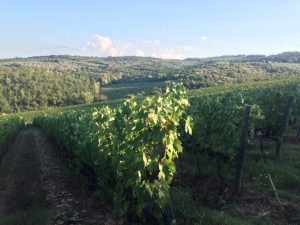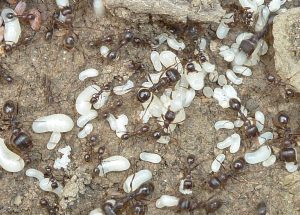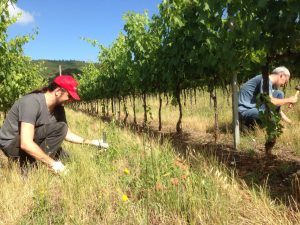In this post, Carsten Brühl explains the background of the new paper “Management matters: A comparison of ant assemblages in organic and conventional vineyards” with colleagues from Florence, Italy.
Agriculture is one of the dominant types of terrestrial land use throughout the world, and understanding patterns of species distributions across agroecosystems is a significant challenge for the future. The intensive use of agrochemicals affects the presence and distribution of several taxa, and organic agricultural methods are believed to be more environmentally sound than conventional ones. In general, organically grown crops host higher species richness for many different taxa, although this evidence is not always unequivocal.
The aim of this study carried out by Alberto Masoni in Tuscany, Italy was to contribute to understanding whether different management options (organic vs. conventional) affect ant assemblages in vineyards, one of the most important permanent crops in Mediterranean-type environments. Therefore ant assemblages from organic and conventional vineyards in the Chianti area, Italy, with similar soil management (frequency of tillage) and placed within a comparable habitat matrix were analyzed.
More than 4500 ants were collected in both vineyard types. Organic and conventional vineyards hosted a similar species pool, but the structure of their assemblages differed and the effect of insecticides in particular appears to be relevant since diversity in vineyards without insecticide use was higher. Both ant abundance and the number of species per unit area were significantly greater in organic than conventional vineyards. Furthermore three species were characteristic for organic vineyards whereas none was an indicator of conventional management.
The study in Italy shows that a positive effect on ant diversity and density is visible at a scale of 2 ha of organically managed vineyard. In a parallel, preliminary, study in Germany no effect of vineyard management on ant communities could be detected which is most likely due to the fact that organic vineyard parcels in this region are small in size (ca. 10 m wide and 80 m long) and are interspersed within conventional vineyards. Additionally, insecticide use is limited in all vineyards and pests are controlled by using hormones. It seems therefore highly plausible that positive effects of organic farming will become obvious only at larger scales even for small organisms such as insects.
The paper can be requested or accessed here.



